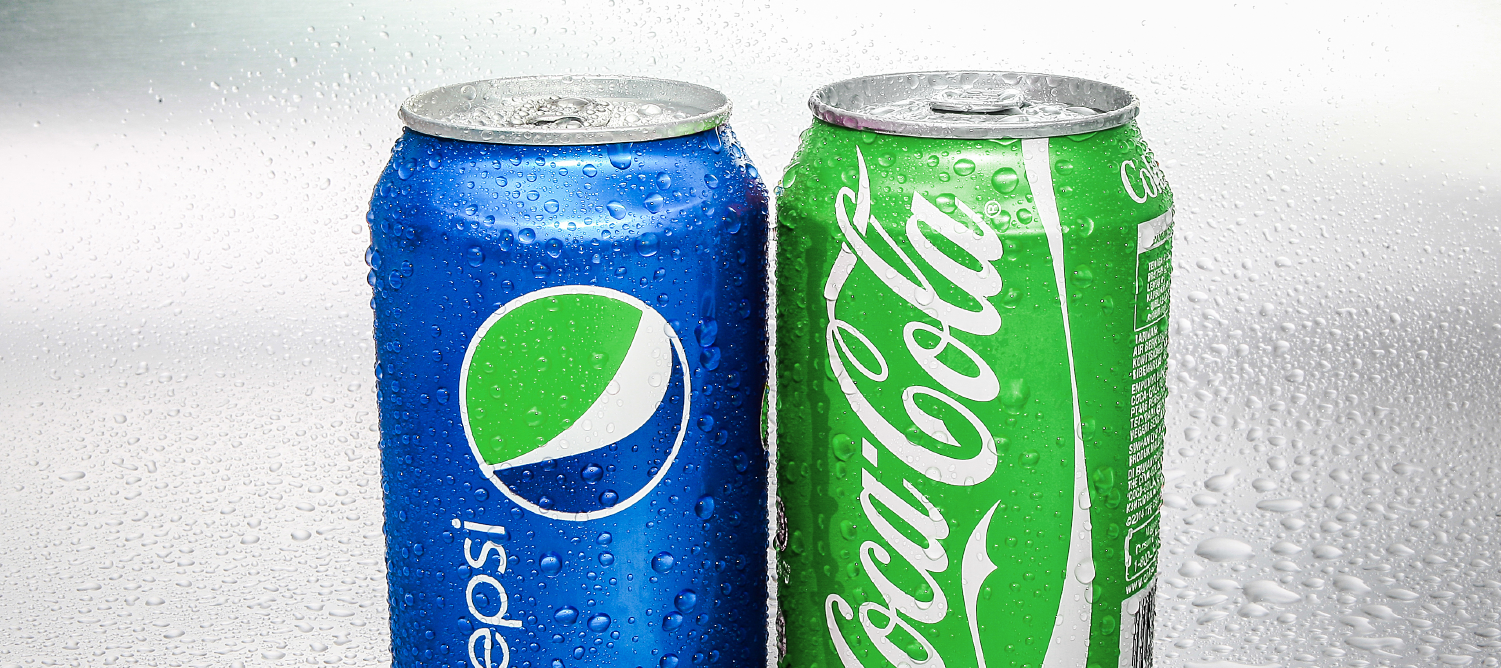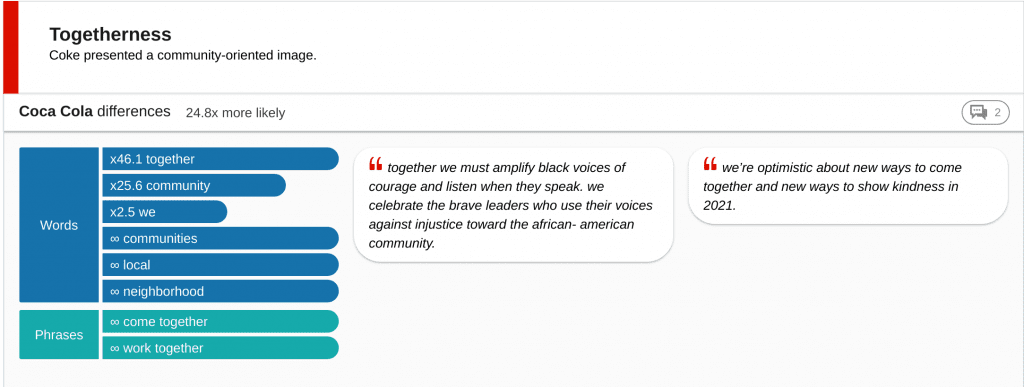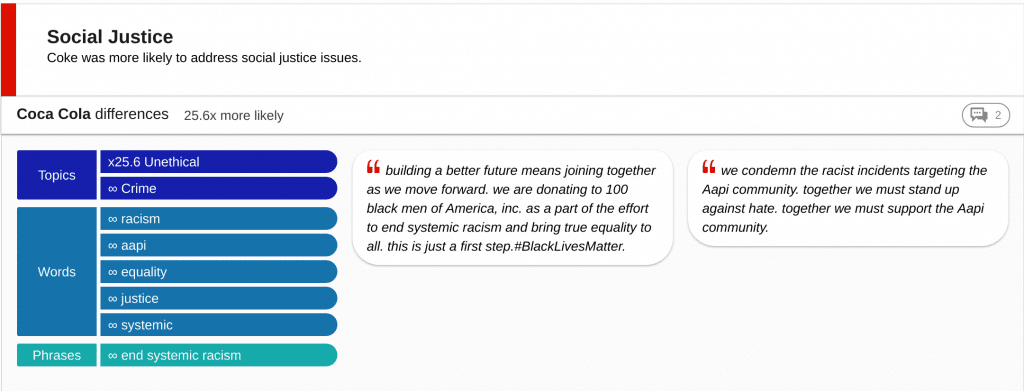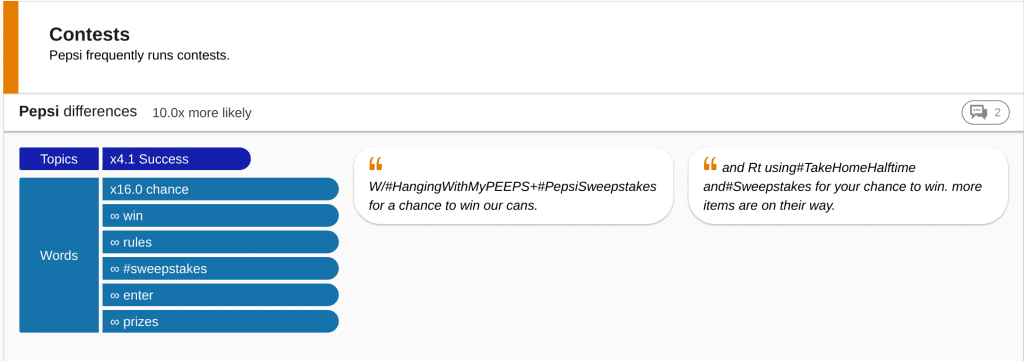Coke vs. Pepsi: Brand voice comparison

There are few brand rivalries that can compete with the clash of the colas – Coke vs. Pepsi.
The two soda brands entered an all-out rivalry in the 1980s and are still head-to-head competitors. In today’s saturated market, how do these two brands maintain influence and differentiate their product from each other? Let’s find out.
Relative Insight can compare any two sets of words to uncover the differences in language – this includes topics, words, phrases, grammar and emotion. These comparative insights demonstrate the unique linguistic traits of a brand in the context of competitor comparison.
For this project, we compiled Twitter and Instagram posts from Coca-Cola and Pepsi dating back to January 2020. By comparing the language used by the two brands, we can uncover the unique tone of voice and social media strategies they use to create distinct brand identity.
Coca-Cola
Coke emphasized the importance of community and togetherness regularly on social media. We observed the use of phrases like come together and work together, creating an image of unity and a collective mission. Coke also used the words we, we’re and we’ve more than Pepsi. The use of these plural pronouns allude to a united brand front and loyal customer base.

The past year has been a social justice reckoning, and brands have been forced to make strategic choices as to how they will address current events like Black Lives Matter and Stop Asian Hate, and Coca-Cola gave more attention to these issues on social media compared to Pepsi. Our analysis found the brand more likely to use words like racism, equality and justice.

Coke was also more likely to address the topic of helping, using words like support and donating throughout their posts. This shows effort beyond ’empty’ social media posts, demonstrating real-world financial action from the brand. Coke highlighted the quotes of specific company leaders including presidents and directors to create a human element, drawing back the corporate curtain.
Coke’s social media strategy was more likely to evoke emotions of happiness by using words like fun, smiling, joy and hug. These words were often used in the bid to to create an aura of positivity and cheer, which shows a determined effort to create a carefree or happy-go-lucky brand persona and tone of voice.
Pepsi
Alternatively, Pepsi utilized its social media channels for predominantly promotional purposes. The brand promoted contests, giveaways, brand partnerships, event sponsorships and more. This strategy is observed through the prominence of words like sweepstakes and frequent social media mentions tagging partners. The brand heavily advertised partnerships like the Pepsi-sponsored Super Bowl halftime show and Fox game show Cherries Wild.

Pepsi positioned its product as a compliment to food, often posting recipes which we observed through the use of words like salt, onion and garlic. Our analysis found higher use of numbers and units of measurement from Pepsi, also from the many recipes posted by the brand.
The tone of voice Pepsi creates varied between highly promotional language to a more conversational brand voice, and Pepsi were more likely to use spoken interjections like hey, oh and yeah. This linguistic technique makes the brand appear more human and relatable amidst the corporate promotional content.
What does this mean?
Coke and Pepsi offer such similar products, so it is crucial that they can positively distance themselves from each other. In an effort to create unique identities, Pepsi has developed a relatable yet corporate persona – while Coke is cheerful and community-oriented.
Companies can achieve a distinct image through marketing efforts and brand development, specifically image and tone of voice. Without a clear brand identity, a product will not stand out among competitors.
